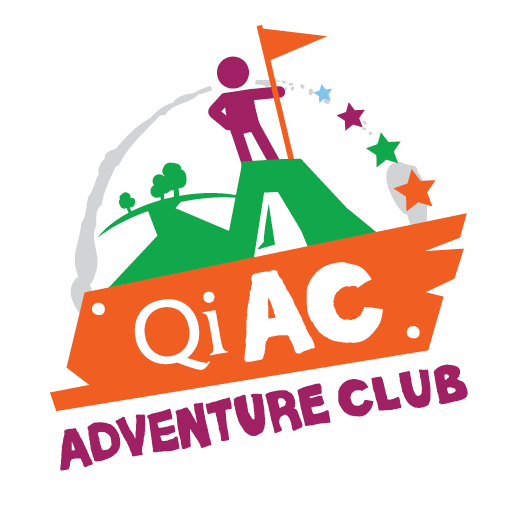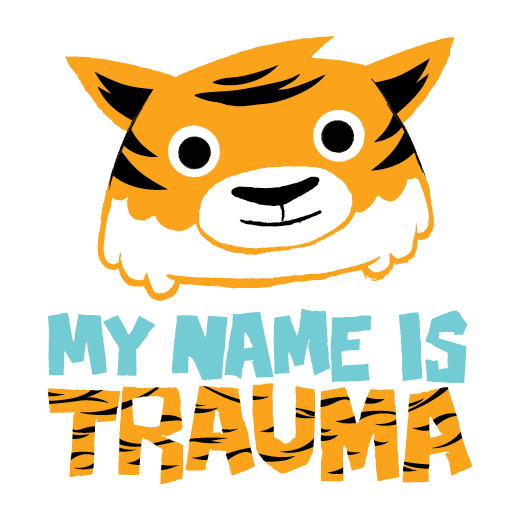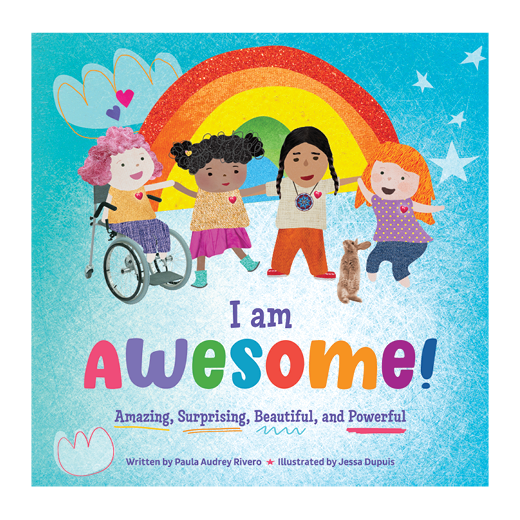World Storytelling Day: Sharing Stories and Some of Our Faves
Image description: A pair of hands hold open a book on top of a blanket. A string of fairy lights decorate the center.
Storytelling is timeless.
From an Instagram Reel to a Viking Saga, stories and storytelling are embedded in our ways of relating, learning, remembering and expressing to ourselves and others. Stories help to make sense of ourselves, to build upon knowledge, to vouchsafe information, and can carry powerful responsibility in constructing our perceptions of reality.
World Storytelling Day celebrates the art of storytelling across the globe. This day is traditionally celebrated around the springtime Equinox. The aim of this global celebration is for people to come together and share the art of storytelling over the course of the day and evening.
Storytelling is an ancient art form that allows people from all corners of the world to share their unique experiences and creative visions with others. Stories can remind us of our connectedness through the similarities of our human experiences and can also help us to understand our differences.
What you can do on Storytelling Day
Image description: A person engages in an online conversation on a tablet.
While it may take time to search online and in your community, storytelling can be found at school, at home, and online in live and pre-recorded formats.
Get Reading
Visit the local library and take out a book or two!
Youtube is full of dozens of storybook reads. Parents and clinicians may often preview books before buying physical copies for kids and clients.
Vooks is an interactive reading system with a variety of books and read-alongs. You can start with a free Vooks trial, or check out the selection of free vooks.
Early World of Learning helps preschoolers and children grasp early childhood themes. You’ll need a library card, but access is free!
Download Hoopla on your phone or tablet and use your library card to log in and start reading!
FreeChildrenStories.com has a variety of books for all ages available to read online.
Write or Tell a Story
You don’t need to go all out and you don’t have to be the best writer or storyteller in the world.
You can tell your children, your colleagues, your friends, or partner a story. You can tell them a personal story from your past or find an uplifting story to share with them. You can also listen to and share other people’s stories from around the world.
Storytelling can be a great way to engage, entertain and delight children in all sorts of situations. Storytelling can also be a useful tool to educate and alleviate anxiety in children in a non-threatening, calm and relaxing way.
In fact, a group of actors and authors have come together and set up an online storytelling service for children aimed at easing anxiety. ‘Operation Storytime’ is devoted to entertaining and amusing children (and parents) who are off school, on lockdown or self-isolating from COVID or other illnesses.
Here is a wonderful and moving example of Josh Gad reading ‘The Giving Tree’ by Shel Silverstein.
Help Children Write Stories
Encouraging children to write their own creative stories is a useful tool for parents and teachers to discover how they feel and experience the world. Reading a child’s stories can offer some invaluable insights and you never know, you might just have a future bestselling author in your hands!
So, why not have a look at all the storytelling resources online at the moment and settle down and listen to a good old-fashioned story?
Social Stories for Children
On World Storytelling Day, it would be remiss of us at Qi Creative to not mention a topic close to our heart - Social Stories for children.
Social Stories are a useful tool in helping children with disabilities, special needs, and other life challenges, to overcome some of the difficulties that they experience with social behaviour and interactions.
The idea of Social Stories for children experiencing challenges with social interactions was developed by Carol Gray in 1991. In brief, a Social Story is developed for an individual child to help them ‘read’ and understand social situations. So, for example, if Taylor, a 10-year old, has a specific problem with going to the school cafeteria at lunchtime, a Social Story will be written, using images, characters, animals or themes that Taylor is particularly interested in.
If you’re new to social stories, scour the internet first for examples. Social stories come in various styles of word structures and image arrangements.
Social Stories are generally very specific to one behavior or one event. For example: “Sarah’s Birthday”, “Picture Day at School”, “Taking Off My Shoes”, “Asking For Help”
Social Stories are often made with very easy to recognize symbols and cartoons, but can also be made with pictures of a child and the people involved in their lives.
Most social stories are written in very clear, very simple words. Make sure the story is written to the reading level of the intended recipient.
Appropriate social behaviours are explained in story form following an information-gathering exercise about the specific problem from teachers, colleagues, family and Taylor. The story can be very visual and, sometimes, different colours are used to express different emotions.
The National Autistic Society has a whole host of interesting information on Social Stories for those of you who would like to know more. In addition, you can contact one us if you are interested in Social Stories for your child.
Assistive Devices
Not all stories are in book form. Assistive devices such as tablets and visual charts can also tell your story.
Favourite Stories From the Qi Creative Team
Some are stories we read as kids, others are stories we want to read to our kids. Some are our favourite stories because of the people in our lives who represent the characters we read, others are our favourite stories because of the people in our lives that create the stories we want to tell others.
Sam Pathirana: Oh, the Places You’ll Go! by Dr. Seuss.
We got a copy of this book when my first child, Mila, was born. I look forward to reading it to her and her brother, Mikko, at every stage of their lives whenever they want a story.
Bailey Walton: The Starfish Story by Loren Eisley.
You can read the full story here! It is an important one because it reveals the power we have in changing one family, one life, at a time.
Making a difference is not a zero-sum act—making a difference means making sure everyone is counted for and supported.
Jon Rivero: The Giving Tree by Shel Silverstein.
There’s a quote within: “Once there was a tree…and she loved a little boy.”
To me, the tree represents both my mom and dad. Throughout my entire life, my parents wanted to give me nothing but the best opportunities to be my best self and serve others in this world.
They nurtured me to gain skills in martial arts, music, dancing, and spark within me a drive to succeed at anything I could set my mind on. They have done this through tremendous unconditional love, sacrifice, and faith in us as their children; wanting nothing more than for us to simply choose happiness along the way.
In many ways, this book is excruciatingly sad because my dad is no longer alive, and I cannot spend time with him anymore—just like in the book where the tree wanted nothing more than for the boy to simply climb, swing, and eventually just sit on the tree trunk.
However, it is also a reminder of the time that I still have with my mom, and to simply spend time together being happy. I feel like this is a very important book for me in my life right now because my wife, Paula and I want to pass down the value of spending quality family time with our daughter, Lena, while we still have the time to do so. There is no better time like the present.
Deanna Halls: The Velveteen Rabbit by Margery Williams.
This book is also known as How Toys Become Real.
Reading this story as a kid gave me a sense of validation by a grownup author, in how much love I poured over my favourite toys, how attached I would be to sneak one to school in my backpack, to know their personalities when I played with them, or feel devastated when I wouldn’t have any room in the car to carry them all before going on vacation with my family.
The Velveteen Rabbit, reflecting back as a grownup myself, is a story of the power you have in pouring your passion and your love in your dreams, and making those dreams come alive one day—and that no matter what happens in your future, love will carry you forward, and you don’t have to be understood by everybody to be loved by somebody.
To this day, a stuffed animal will always put a smile on my face—whether it’s a Miffy bunny in Amsterdam, a tanned Hello Kitty in Hawaii, a Moogle in Japan, I’m always adding a new friend to my collection.
There is one particular stuffed giant panda gifted to my parents on my baby shower named Chi-Chi, who still takes up space in my bedroom.
Chi-Chi is my velveteen rabbit, and I’m sure she’s up to plenty with the rest of her friends when I’m at work or at school.
Paula Rivero: My Name is Trauma, because this book would not be possible without a story of my own.
7 years ago, I met a young lady during a clinical placement for my MSW and had the opportunity to work with her using a trauma informed intervention that was created by Starr Commonwealth
This young lady inspired the idea of Trauma The Tiger 🐯and ultimately the writing of the book ✍🏻My Name is Trauma in collaboration with, my partner Jon Jon. 🧔🏾
I was exactly in the right placement, at the right time in my life. However, I wouldn’t have believed this weeks before, as I was being let go from a placement that I relentlessly pursued with great passion. I left that placement feeling inadequate and like I was not good enough. However, I continued to stand in power with unwavering faith ✨and in trust of the journey ahead. I am grateful I did 🙏🏼.
We have now shared over 1000 copies of our book with people, communities, and organizations around the world 🌏; we have facilitated numerous workshops about trauma and creating resilience through play, and we have received humbling testimonials about the impact our book has had on people’s lives.
Michal-Joan Jenkinson: The works of Barbara Reid.
Barbara Reid is a Canadian author & illustrator. Her plasticine illustrations tell stories all by themselves! I especially love The Subway Mouse and The Party.
Last Words
We invite you to take a bit of time to read, write and listen to some stories this week to commemorate World Storytelling Day. Lose yourself in tales of love, magic, hope and courage. Remember, even in the face of adversity, your awesomeness can shine through.
References
Marshall, D., Wright, B., Allgar, V., Adamson, J., Williams, C., Ainsworth, H., Cook, L., Varley, D., Hackney, L., Dempster, P., Ali, S., Trepel, D., Collingridge Moore, D., Littlewood, E., & McMillan, D. (2016). Social Stories in mainstream schools for children with autism spectrum disorder: a feasibility randomised controlled trial. BMJ open, 6(8), e011748. https://doi.org/10.1136/bmjopen-2016-011748
Thompson RM, Johnston S. Use of social stories to improve self-regulation in children with autism spectrum disorders. Phys Occup Ther Pediatr. 2013;33(3):271–284. doi:10.3109/01942638.2013.768322














